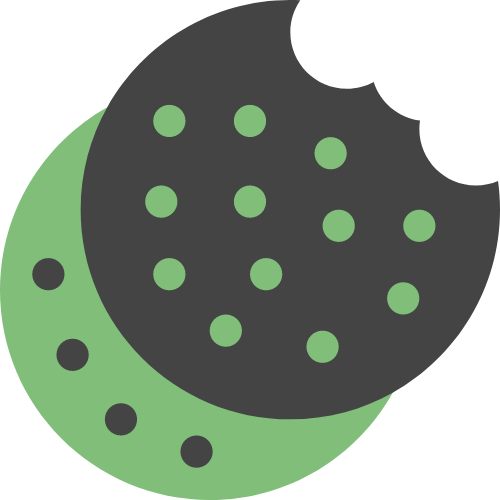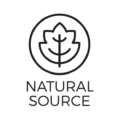
- Functional Food for your Genes
-
by k.mammasis
What is high phenolic olive oil? Not many of us realize the difference between standard extra virgin olive oil and high phenolic olive oil. And this is not bad, because high phenolic olive oil has only been around for the last decade. High phenolic olive oil is simply put, an extra virgin olive oil that is very high in polyphenol concentration. As simple as it may sound, the process to produce this medical-grade olive oil is complicated, challenging, and contains smart scientific elements from start to finish. In this article, we will trace the origins of this unique functional food and how we have contributed to the paradigm shift in this sector. Feel free to discover our high phenolic olive oil rich in polyphenols and monounsaturated fatty acids.
What Constitutes a Health Claim according to Regulation (EC) 1924/2006
According to Regulation (EC) No 1924/2006, a health claim is any assertion made regarding the connection between food and health that is supported by the European Food Safety Authority (EFSA), which is in charge of assessing the relevant interested parties’ scientific evidence. Health claims are defined as “any claim that declares, indicates or implies a relationship between a food category, a food, or one of its elements and health” in order to “improve the customers’ ability to make educated and meaningful choices” 1.
On the other side of the Atlantic, FDA has approved a new qualified health claim for olive oil based on studies that show eating about two tablespoons of olive oil a day may reduce the risk of heart disease 2.
Health Claim on Polyphenolic Olive Oil

In 2002 a grant agreement was approved by the European Food and Safety Administration under the name of EUROLIVE, to perform a clinical nutritional trial concerning the effect of a traditional Mediterranean antioxidant-rich food, olive oil, on oxidative stress and damage to lipids and DNA in humans. EUROLIVE also aimed at studying the bioavailability and the binding of olive oil phonemics compounds to low-density lipoproteins. This study focused on whether a reasonable supplemental amount of low phenolic content extra virgin and high phenolic extra virgin olive oil would reduce lipid per oxidation and DNA oxidation in 180 humans from 3 European populations (Northern, Central and Southern), and whether there are differences in effect according to the olive oil phenol concentration. The results were profound and ground-shaking, leading to the EU Reg 432/2012, which in short states that any olive oil containing more than 250mg/kr of polyphenols contributes to the protection of blood lipids from oxidative stress. According to the findings of the EUROLIVE study, “the lowest daily dose of hydroxytyrosol and its derivatives (measured by HPLC) in olive oil which showed a significant effect on in vivo LDL peroxidation was 5mg”3 . Polyphenols have been reported to reduce heart disease risk factors by lowering blood pressure and cholesterol, reducing blood clotting, and enhancing arterial lining health.
The lowest daily dose of hydroxytyrosol and its derivatives (measured by HPLC) in olive oil that exhibited a significant effect on in vivo LDL peroxidation was 5mg, according to the results of the EUROLIVE trial 4.
Polyphenols and their Role in Olive Oil
The primary polyphenols and their derivatives are distinguished in the hydroxytyrosol, tyrosol, and oleuropein complex. Flavonoids, isoflavonoids, phenolic acids, tannins, lignans, and other plant secondary metabolites make up the large group of polyphenols.
Phenolic acids (such as hydroxytyrosol and tyrosol), secoiridoids (such as oleuropein), and lignans (such as pinoresinol) are the main polyphenols found in olive oil. Polyphenols have been discovered to reduce blood clotting, cholesterol, blood pressure, and arterial lining health, all of which are risk factors for heart disease 5.
Flavonoids, secoiridoids, and lignans, the three primary forms of polyphenols found in olive oil, each perform diverse tasks and have unique health advantages. Olive oil contains flavonoid polyphenols, which act as natural antioxidants and give the oil its bitter flavor, astringency, and oxidation resistance. Secoiridoid polyphenols, such as oleuropeinin, have been proven to provide health benefits by inhibiting the oxidation of LDL, or low-density lipoprotein. Their anti-oxidant, anti-microbial, and anti-inflammatory capabilities have also been acknowledged in numerous papers. Olive oil secoiridoids may also improve age tolerance, which can help an organism endure disasters brought on by age-related illnesses. Oleuropein aglycon and oleocanthal have just lately been linked to a reduced risk of developing Alzheimer’s disease 6 7.
The Difficulty of Measuring Polyphenols
“The polyphenols (e.g. hydroxytyrosol and oleuropein complex) in olive oil, can be characterised by their content of hydroxytyrosol and its derivatives (e.g. oleuropein complex)” 8.
It is generally known that while their esterified derivatives are significantly more prevalent, the concentration of free hydroxytyrosol and tyrosol in olive oil is quite low. Finding hydroxytyrosol and its derivatives is the first step in adapting the health claim to market conditions. Tyrosol and hydroxytyrosol are two separate, distinctive phenolic compounds found in both free and conjugated forms as secoroids and aglycones in olive oils. The free forms of tyrosol and hydroxytyrosol and their secoroids derivatives have been described as constituting about 30% of the total phenolic content of a virgin olive oil, with other conjugated forms like oleuropeine and ligstroside aglycones constituting almost half. However, the content of both total and individual phenolics varies among cultivars and harvests.
As a result, it would be appropriate to consider tyrosol as a derivative of hydroxytyrosol and to count oleocanthal in the measurement of phenolics because it produces tyrosol upon hydrolysis, as stated in Regulation EU 432/2012, “The claim may be used only for olive oil which contains at least 5mg of hydroxytyrosol and its derivatives per 20ml of oilve oil.”
Methods for Evaluation
Currently, liquid chromatography and the Folin-Ciocalteau colorimetric test are the two most popular techniques for determining the polyphenol content in olive oil17. Due to the reagent’s low selectivity towards phenolic compounds, the first approach produces imprecise results. Additionally, such procedures do not produce quantitative data regarding individual phenolic compounds. Contrarily, HPLC requires time to conduct the analysis even if it is exceedingly sensitive and specific (approximately 1h). It doesn’t provide any details on phenolic molecules.
It is common knowledge that developing a trustworthy procedure for the analysis of the extracted materials comes after the phenolic components from VOO have been isolated. The intricacy of the large group of secoiridoids makes it often impossible to completely characterize the structural characteristics of the phenolic fraction, despite the development of sophisticated analytical tools and techniques. Oleuropein aglycone, ligstroside aglycone, and their derivatives, such as the hydroxylated, decarboxy-methylated, dehydrated, and methylated forms, are the primary substances identified in this group. Although NMR might be used, HPLC is the accepted method for hydroxytyrosol, tyrosol, and oleuropein complex. The 1H NMR approach is the simplest and most precise way to measure polyphenols complex 9.
High Phenolic Olive Oil & Omega-3 Fatty Acids
High Phenolic Olive + Algae Omega 3 Oil
Omega-3 content: 250 mg per 10ml (raw)
Omega-6 to Omega-3 ratio: 1.5:1
Our high phenolic olive oil is among the very few in the world that carry all 3 health claims that relate to the phenol concentration and content of monounsaturated fatty acids, including A-Linoleic Acid, Linolenic Acid and Oleic Acid. Olive oil is possibly the greatest source of unsaturated fatty acids including a unique omega complex, i.e. ALA, Omega 6, and Omega 9. In addition, high-phenolic olive oil contains a unique set of bioactive compounds not found elsewhere in nature, e.g. tyrosol, hydroxytyrosol, and many more.
On the other hand, algae oil is possibly the only exception to this rule, containing high amounts of EPA + DHA. In a recent study carried out by researchers at the University of Madrid, it was shown that treatment with a combination of olive oil and algae oil improved the lipid profile, insulin sensitivity, and vascular function in elderly rats while lowering aging-induced inflammation and oxidative stress in the liver and cardiovascular system 10. We researched and developed a product that combines the unique attributes of our world-class medical olive oil with the ones offered by algae, in order to produce a synergistic combination of these great plant sources that offer unique health benefits to anyone in the look for substituting typical omega-3 supplements with functional food for omega-3s.
It is the most natural and highly concentrated omega-3 functional food that we are aware of. And yes, it is among our top products because it has unparalleled qualities. It has no trace of chemical compounds or any form of toxification factors. Our formula supplies you with 250mg of the best food for omega-3 from algae (10ml / day), together with a set of bioactive compounds with pharmacological properties, e.g. oleacin, oleocanthal, oleuropein, elenolide. The concentration of olive oil polyphenols is among the highest in the world and always exceeds 500mg/kg. The olive oil polyphenols contained in our product will contribute to the reduction of your oxidative stress markers. Do you have any questions on foods for omega 3? Please read the most frequently asked questions on foods for omega 3 on this article. You may also be interested in reading about the 5 Foods With The Most Omega-3 Fatty Acids.
Summary
High phenolic olive oil is the best fat in the world with a series of unmatched health benefits. As researchers progress in revealing some of its secrets, we will continue to be at the forefront of technology and science in order to provide you with a natural functional formula that is effective and truly good for your health. Polyphenol rich olive oil is among the most sustainable fatty acids with a very high omega 3 content. It may safeguard heart health, boost cognitive performance, and reduce the risk of developing various chronic diseases.
A Word From MILESTONE®
MILESTONE® Food for your Genes uses only high-quality sources, including peer-reviewed studies, to support the facts within our articles. Read our editorial process to learn more about how we fact-check and keep our content accurate, reliable, and trustworthy.
- Regulation (EC) No 432/2012, OJ L 136/25-5-2012[↩]
- FDA Completes Review of Qualified Health Claim Petition for Oleic Acid and the Risk of Coronary Heart Disease[↩]
- Covas MI, Nyyssönen K, Poulsen HE, Kaikkonen J, Zunft HJ, Kiesewetter H, Gaddi A, de la Torre R, Mursu J, Bäumler H, Nascetti S, Salonen JT, Fitó M, Virtanen J, Marrugat J; EUROLIVE Study Group. The effect of polyphenols in olive oil on heart disease risk factors: a randomized trial. Ann Intern Med. 2006 Sep 5;145(5):333-41. doi: 10.7326/0003-4819-145-5-200609050-00006. PMID: 16954359.[↩]
- Covas MI, Nyyssönen K, Poulsen HE, Kaikkonen J, Zunft HJ, Kiesewetter H, Gaddi A, de la Torre R, Mursu J, Bäumler H, Nascetti S, Salonen JT, Fitó M, Virtanen J, Marrugat J; EUROLIVE Study Group. The effect of polyphenols in olive oil on heart disease risk factors: a randomized trial. Ann Intern Med. 2006 Sep 5;145(5):333-41. doi: 10.7326/0003-4819-145-5-200609050-00006. PMID: 16954359.[↩]
- Olive Oil Source[↩]
- Menendez JA, Joven J, Aragonès G, Barrajón-Catalán E, Beltrán-Debón R, Borrás-Linares I, Camps J, Corominas-Faja B, Cufí S, Fernández-Arroyo S, Garcia-Heredia A, Hernández-Aguilera A, Herranz-López M, Jiménez-Sánchez C, López-Bonet E, Lozano-Sánchez J, Luciano-Mateo F, Martin-Castillo B, Martin-Paredero V, Pérez-Sánchez A, Oliveras-Ferraros C, Riera-Borrull M, Rodríguez-Gallego E, Quirantes-Piné R, Rull A, Tomás-Menor L, Vazquez-Martin A, Alonso-Villaverde C, Micol V, Segura-Carretero A. Xenohormetic and anti-aging activity of secoiridoid polyphenols present in extra virgin olive oil: a new family of gerosuppressant agents. Cell Cycle. 2013 Feb 15;12(4):555-78. doi: 10.4161/cc.23756. Epub 2013 Jan 31. PMID: 23370395; PMCID: PMC3594257.[↩]
- Quantitative Measurement of Major Secoiridoid Derivatives in Olive Oil Using qNMR. Proof of the Artificial Formation of Aldehydic Oleuropein and Ligstroside Aglycon Isomers[↩]
- https://www.newfoodmagazine.com/article/22720/eu-health-claim-olive-oil-polyphenols/[↩]
- OLIVAE No122 November 2015. 21. Regulation (EC) No 1924/2006. Article 10 § 1, OJ L 404/9, 30.12.2006[↩]
- González-Hedström D, Amor S, de la Fuente-Fernández M, et al. A Mixture of Algae and Extra Virgin Olive Oils Attenuates the Cardiometabolic Alterations Associated with Aging in Male Wistar Rats. Antioxidants (Basel). 2020;9(6):483. Published 2020 Jun 3. doi:10.3390/antiox9060483[↩]
















